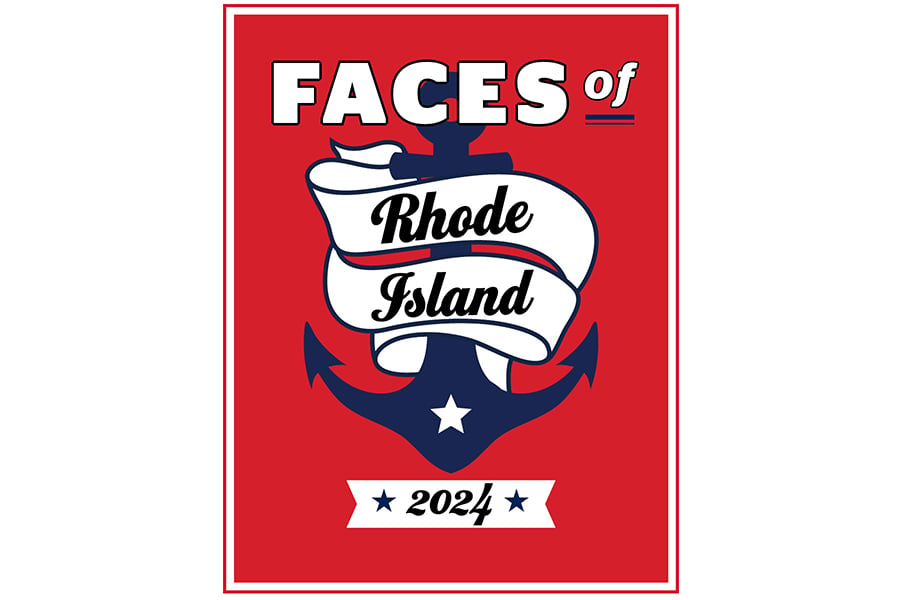Fashion@Brown (F@B) Design Runway Show Showcases Student Work
More than thirty designers participated with more than 100 models walking the runway at One Davol Square in Providence.

Chloe Chow’s “Metalgalactic” collection. All runway photos by Matthew Chen (@matthew__.chen).
The Brown Fashion Week Spring Runway Show highlighted the student work of Fashion@Brown, Brown University’s fashion program. F@B is made up of more than 300 students across twelve teams, and it’s also one of the largest student groups in the Ivy League. The spring fashion show is their major event of the year with students working for months on collections that they unveil to an audience on the runway that night. More than thirty designers participated with more than 100 models walking the runway at One Davol Square in Providence. The large narrow space was lined with chairs to frame a straight walkway and music pumped in from speakers, while audience members eagerly waited for the production to begin.
Sustainability was a huge trend throughout the presentation, with many students reusing previously loved fabrics and materials to create new looks. Hardware and metal also appeared frequently as accessories, accoutrements or suits of armor on garments in a variety of ways, which I took as a statement on combating and protecting oneself from today’s tumultuous world circumstances.
The first designers, Mackenzie Baker and Emmanuel Chery, showcased a collection called “Paradise Lost,” inspired by John Milton’s epic poem with models strutting down the runway in three sets of four looks representing heaven, earth and hell. Two models depicted Adam and Eve, wearing not much more than fig leaves, constructed from metal that barely covered their bodies, followed by a model in a white garment constricted by a serpent that wound around her torso. The next set represented a nuclear family, presented as hell, with a model wearing a metal breastplate with a cross carved into it, followed by another model wearing a chain-like caftan with a plunging neckline. Finally, earth was represented through two models wearing pitch black garments, which symbolizes where our future could be headed. “Paradise Lost” depicted fashion in post World War II America (or is it pre-World War III?) through heavy pleating and metalwork.
Aseel Rafat’s “Silken Sanctuary” represented modern looks for the Muslim woman, showcasing beautiful abaya garments in a variety of colors and textures while honoring Islamic modesty.
Ellen Davis’s “Studio Threads” made modern workwear more stylish with an abundance of interesting fabric choices and patterns, using the same rugged materials that are often used for hardhat occupations. “Using historical workwear materials, including denim, canvas and hickory stripe, the collection celebrates both practicality and personality — functional pieces that make the wearer smile,” wrote the designer in a description of the collection.
Zoe-Anna Rudolph-Larrea’s “When Will This All Be History” is a collection that transitions the wearer from childhood to adulthood, using thrifted and found clothing items to create new looks. The designer used recycled textiles they already owned, such as ties, denim and other items collected at estate sales and thrift stores.
Chloe Chow’s “Metalgalactic” show drew inspiration from stars and molten metal to construct garments from white canvas and plasma cut metal. The pieces represented the artist’s interpretation of shields as accessories, meant to restrict and protect the wearer.
Another favorite collection that involved metal, “Playing House,” by Oscar Tengen and Rusudan Dushuashvili, featured a dystopian edge where the models protected their minds and fertile bodies with armor to guard against radiation. The man’s groin and woman’s pregnant belly were encased in metal while they both donned tinfoil caps to prevent their minds from being accessed.

Buzzy Martin’s “Hiraeth” collection. Photo by @romantic_piscean.
I loved the ingenuity, fabric textures, and grace of the designs in Buzzy Martin’s otherworldly “Hiraeth” collection. The designer was named after an astronaut and chose to reflect on that theme in their collection. “I have always lived on a spaceship — my own heterotopia, intense, incompatible and contradictory to the British society in which I grew up,” he says. Rich fabrics and an unusual black lace printed texture on a fuchsia background were sewed into nontraditional silhouettes, including dress shirts with exaggerated pointy collars and an asymmetrical dress with intricate button work. Several broad-shouldered sculptural dresses in solid black and black and chartreuse appeared in the collection alongside a long dress coat and asymmetrical long skirt in plaid paired with a chain and black jacket with unusual button work. Buzzy appears to have created a whole new category for fashion: Futuristic grunge.

Buzzy Martin’s “Hiraeth” collection. Photo by Matthew Chen (@matthew__.chen).
The gothic and grunge pieces in Alec Del Prado Lippman’s “Mutt,” the final student collection, were literal showstoppers. The finale walk featured a woman in a cocoon-like, binding full-length gown paired with sky-high heels, who shimmied down the runway (and miraculously, didn’t fall!). The other looks included a black mini dress with a full ski mask and hood and other racy, strappy numbers as well as a long-sleeved sweater with a mid-section cutout paired with shorts, all in head-to-toe black, of course. “The jagged edges of the collection morph into delicately powerful forms,” said the designer. I wouldn’t mess with anyone wearing these looks [purchases entire collection].
The finale walk was incredible to see with all the students’ collections presented together in a cohesive way. Watch the full live stream here!
View this post on Instagram

































